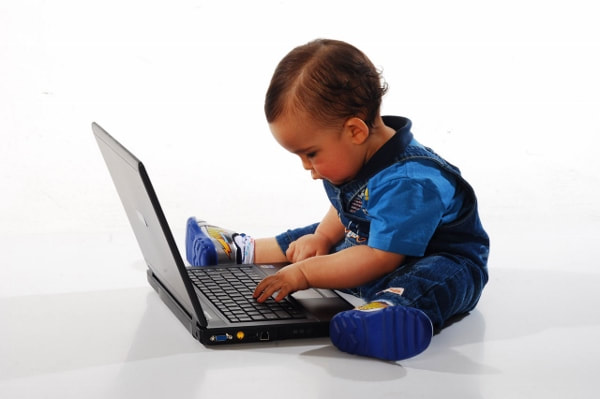When it comes to business-related stuff and work-related items, a home office of a self-employed person pretty much resembles any other office. There will be incoming and outgoing papers and materials, but also a lot of stuff related to whatever product or service you provide. Some of us might have lots of flyers or brochures, others might have examples of their work or samples to give out or show to potential clients, etc. In terms of paperwork, most businesses have a similar approach to it and I would point to a post I wrote last week on a similar subject, where I’m talking about the different kinds of storage for different kinds of stuff. As far as paperwork is concerned, I cannot really add anything for the home office, but there are other aspects of a home office that a standard office may not usually encounter. Home offices tend to be not as secluded and separated from the rest of your life as you would sometimes wish for, but the choice to work from home is usually inspired by the need to be around most time because of kids or a relative needing regular care, or a similar situation. Or it could be simply because you don’t want to commute and have chosen to work from home part-time or full-time. In either case, an office at home involves more than just work: if you are having kids around, there might be kids’ stuff around, or you might be doing creative work and that could involve a lot of materials, bits and bobs that need to be accessible but not in your way, etc. Let’s look at those non-paper materials. The main aspect of any of these things is simple: while staying accessible, they should really not impede your work. If they do, they are out of place and should be removed or stored away. This tends to be particularly important for all materials that are related to kids. There is nothing wrong with taking care of your baby or toddler besides your work, but it is a good idea to keep the materials required to do so to a minimum in your work space. You’ll find your productivity will increase if nothing is in your way or distracts you more than absolutely necessary. By all means, create a play area and keep some toys and the necessities to change diapers, etc. around, but try not to make it into a second nursery room! The same goes for any other side-line activities you might be involved in while on work schedule or while you are staying in your work space. All of this is assuming that you have managed to make an area in your home into an exclusive work area, or course. It is a good idea to have a room dedicated to working, or at least a very specific area somewhere in your home that you clearly identify with work… and nothing else! An important part of being productive at work consists of finding a place that your mind will associate exclusively with work. Back to storage: most regular office items come in paper format or can be easily assigned to a drawer. However, if you are using your office in conjunction with other activities, you’ll need to make sure that the odd items involved in running an office AND a regular household side by side might cause problems when storing them, for two reasons: First, some items we deal with outside of the office have unusual shapes or sizes and do not necessarily fit into the standard office shelves, cupboards or drawers. You might need specific storage solutions to take care of them. I would strongly advise to do as you would do with any other items in your home: find a definitive spot for anything that has to stay in your workspace and ensure that those things always return there, whatever happens. In practical terms, that could be oversized boxes, or small container sets for smaller items, preferably of the type that can be stacked or comes in stack boxes to start with. Think about hanging space: some things can be stored easily if you simply hang them on wall hooks or rails, and there are many storage systems around in different price ranges. If you find yourself inundated by things that do not belong but need to be there, maybe spend a moment in a specialised store (real of online) and look at options that might just solve your particular issues. Second, some items will need to move between the ‘home space’ and the ‘office space’: that goes specifically for all manner of favourite toys, cups and plates, hygiene stuff, etc. – anything that is not worth duplicating specifically for the office space. In those cases, I strongly recommend finding an easy transport solution. That could be as simple as a deep tray, or a stable bag, or even a little contraption on wheels with multiple hanging boxes to store stuff that moves in and out on a daily basis. As you can probably see, this takes a little planning and the explicit understanding what moves in and out, what is part of your ‘office life’, what belongs to the ‘home life’ and what moves between the two realms. It pays to take stock at some point to find out which items do not belong here (remove them), which ones are out of place (put them back where they belong), which ones are definitely in the right place, and which ones are moving back and forth on a daily basis. Find that out and you’ll be able to make good decisions about your storage needs within your office. If you have enjoyed reading this, you may find these other articles interesting: Comments are closed.
|
Ask the ClutterMeisterIdeas to help clear away the mess in your homes and in your minds.
Feel free to share any of my posts, but please put in a backlink to the original blog post. Thank you. The author
Hi, my name is Tilo Flache. My mission: help clients declutter mind and space.
This blog contains pointers for your journey towards a happier living experience. Archives
November 2023
|




 RSS Feed
RSS Feed




